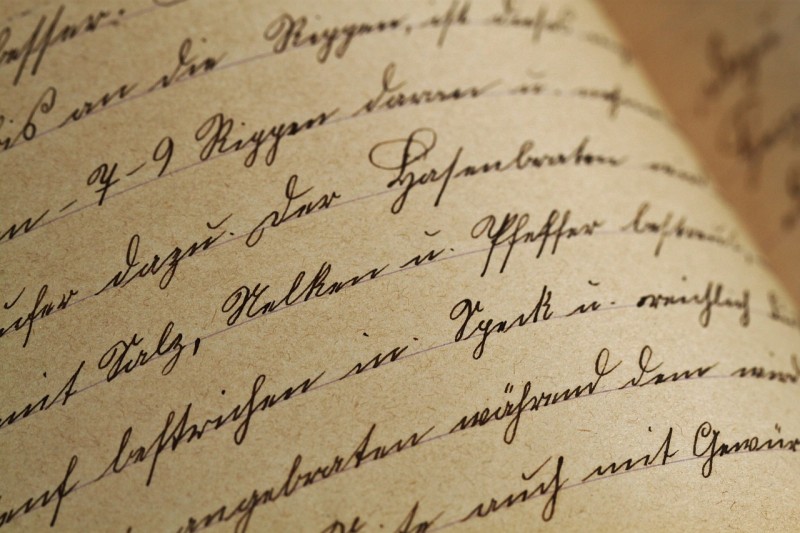
Good handwriting is a valuable skill that not only enhances the legibility of your writing but also reflects your personality. In today's digital age, where typing dominates, we must not forget the charm and importance of well-crafted handwriting. Whether you are a student, professional, or just someone looking to refine their handwriting, here are eight easy and effective ways to do so.
1. Practice Regularly
Like any other skill, consistent practice is the key to improving your handwriting. Set aside some time daily or weekly to dedicate solely to handwriting practice. Even dedicating 15-20 minutes each day can make a significant difference over time. Remember, the more you practice, the better you'll get.
2. Warm-Up Exercises
Just like athletes warm up before a game, your hands need a warm-up too. Engage in simple finger and hand exercises before you start writing. This helps loosen up your muscles and improves your hand coordination, leading to smoother handwriting.
3. Focus on Letter Formation
Pay close attention to how you form each letter. Consistency in letter formation results in neater handwriting. Focus on maintaining the appropriate size and shape of each letter, ensuring they align uniformly on the lines.
4. Use Proper Grip and Posture
Your grip and posture play a vital role in handwriting improvement. Hold the pen or pencil with a relaxed grip, neither too tight nor too loose. Maintain an upright posture while writing, as slouching can hinder the fluidity of your writing.
5. Experiment with Different Writing Tools
Explore various pens, pencils, and other writing tools to find what suits you best. Different tools offer different experiences, and you may discover that one type enhances your handwriting more than others.
6. Slow Down and Be Mindful
In our fast-paced lives, we often rush through writing tasks, leading to messy handwriting. Slow down your writing pace and be mindful of each stroke. Focus on making each letter distinct and clear.
7. Trace and Imitate
Tracing letters and words from examples can be a helpful practice technique. It helps your muscles memorize the movements required to form each letter. Gradually, you can move on to imitating the examples without tracing.
8. Get Creative with Handwriting Drills
Engage in fun handwriting drills that challenge you to write creatively. Try writing in different styles, sizes, or even experiment with calligraphy. These exercises keep you motivated and make the learning process enjoyable.
Handwriting Improvement Challenges
Improving your handwriting may come with its challenges. It's essential to recognize and address them to stay on track.
Overcoming Common Challenges
It's normal to face obstacles while improving your handwriting. Common challenges include inconsistent letter spacing, inconsistent slant, and difficulty in maintaining a consistent size of letters. Be patient with yourself and keep practicing to overcome these hurdles.
Staying Motivated
Handwriting improvement is a gradual process, and it's crucial to stay motivated throughout. Celebrate your progress, no matter how small, and remind yourself of the benefits of having great handwriting.
The Connection Between Handwriting and Learning
Studies have shown a strong link between handwriting and learning. Writing by hand helps with memory retention, comprehension, and creative expression. So, improving your handwriting can positively impact your overall learning experience.
Handwriting and the Digital Age
With the advent of technology, handwriting has taken a backseat to typing. However, it's important to strike a balance between digital communication and the art of handwriting.
Balancing Digital and Handwriting Skills
Incorporate handwriting into your daily life, even if you heavily rely on digital devices. Jot down notes, maintain a journal, or send handwritten letters to loved ones. This way, you keep the tradition of handwriting alive.
Handwriting in Different Cultures
Handwriting varies across cultures, reflecting unique styles and influences. Exploring different handwriting styles can be a fascinating way to appreciate diverse cultures and their traditions.
The Therapeutic Aspects of Handwriting
Believe it or not, handwriting can be therapeutic. Engaging in the act of writing can be a stress-reliever, promoting relaxation and mindfulness.
Handwriting as a Stress Reliever
Writing can serve as an emotional outlet, allowing you to express your thoughts and emotions freely. It can be especially beneficial during times of stress and anxiety.
Art Therapy and Handwriting
Combining handwriting with art therapy can be a powerful way to delve into your subconscious and unleash your creativity.
Handwriting and Personalization
Handwritten notes, cards, or messages add a personal touch that cannot be replicated digitally. It shows that you've invested time and effort to connect with the recipient on a deeper level.
Handwriting Analysis and Personality Traits
Handwriting analysis, also known as graphology, suggests a connection between handwriting styles and personality traits. While not scientifically proven, it adds a fun and intriguing aspect to handwriting.
Suhasini Ganguly: The Forgotten Flame of India's Freedom Struggle
Mandaviya tells Lok Sabha: 110-pc increase MBBS seats in India since 2014
Lok Sabha Passes Nursing-Midwifery and Dental Commission Bills